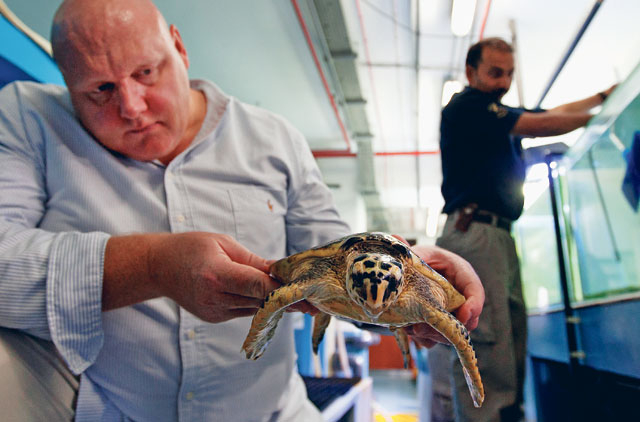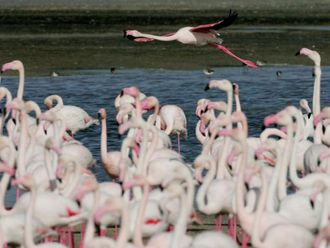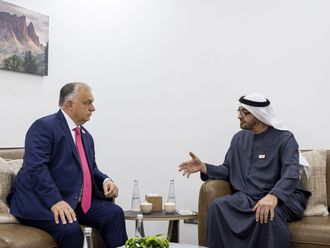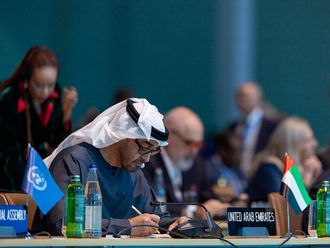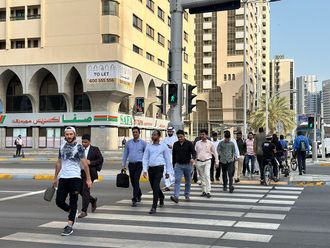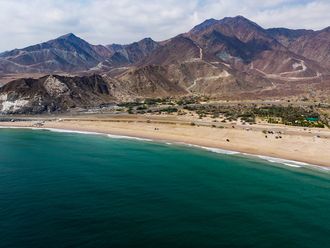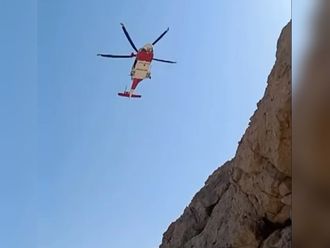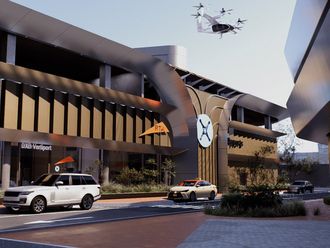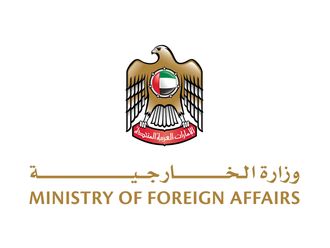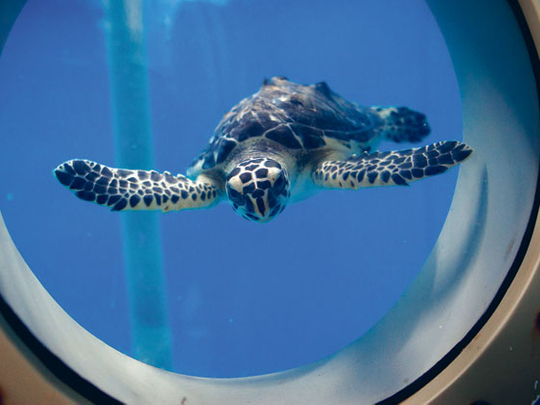
Dubai: Deep in the bowels of the Burj Al Arab lies a maze of saltwater tanks and aquariums of various different sizes.
Within each container, several distressed turtles are continuing their rehabilitation after being found washed ashore with a multitude of illnesses and ailments.
This facility is the Dubai Turtle Rehabilitation Project; a collaboration between The Wildlife Protection Office and Jumeirah's Aquarium team with essential support provided by Al Wasl Veterinary Clinic and the Central Veterinary Research Laboratory.
The Project, which has been running since 2004, takes in sick and injured sea turtles from around the Gulf region and rehabilitates them for release back into the wild.
To mark World Turtle Day on Sunday, a satellite tag will be fixed to a large green turtle later this week when it is returned to the sea following the completion of its rehabilitation.
Kevin Hyland, an ecologist at the Wildlife Protection Office, said: "Each turtle we release is equipped with two individually numbered titanium tags containing our address. If the turtle is ever recovered alive or dead, we know when we released it and hopefully we can gather important data. The benefit of this method is that it is relatively cheap so we can carry out a large number of them. But the disadvantage is it leaves large gaps of information between the turtle's release and recapture.
"However, to celebrate World Turtle Day, we have a battery-operated satellite tag that we will epoxy bond on to the carapace of the turtle being released. We hope the device will transmit for approximately 12 months and send signal beams to a satellite in France. A company based there will then email us the turtle's exact location. This will highlight areas we have not previously known about such as where the turtles go to grow, their migratory routes and our success rates in terms of rehabilitation."
There are approximately 35 turtles being treated at present in the aquarium with around another 25 in a rehabilitation pen at the Mina Al Salaam hotel
Warren Baverstock, Aquarium Operations Manager, said: "One of the main problems we have is positive buoyancy. The turtles come into us generally between December and February, when the sea temperature is a lot colder. They tend to slow down around that time and we notice an increase of bio-foul on them. Sometimes, barnacles grow over their beaks, which prevents them from eating. All of these things contribute to them being exhausted and washed up on the shore.
"Other things that can harm them include boat impact, jet-ski impact and man-made problems such as cigarette butts discarded in the sea. In such instances, the turtle comes up for a breath of fresh air, sees the cigarette butt and tries to eat it. Plastic bags and fishing hooks are also a big problem.
"We take blood samples and x-rays of each turtle that arrives at the aquarium and we do everything we can to establish what is wrong. We then give the turtles health care and get them rehabilitated. They are eventually taken across to Mina Al Salaam where we have a turtle rehabilitation pen for the final stages of their treatment before releasing them back into the sea."
What do you think of this facility? Do such attempts go unnoticed by the general public? Why?


